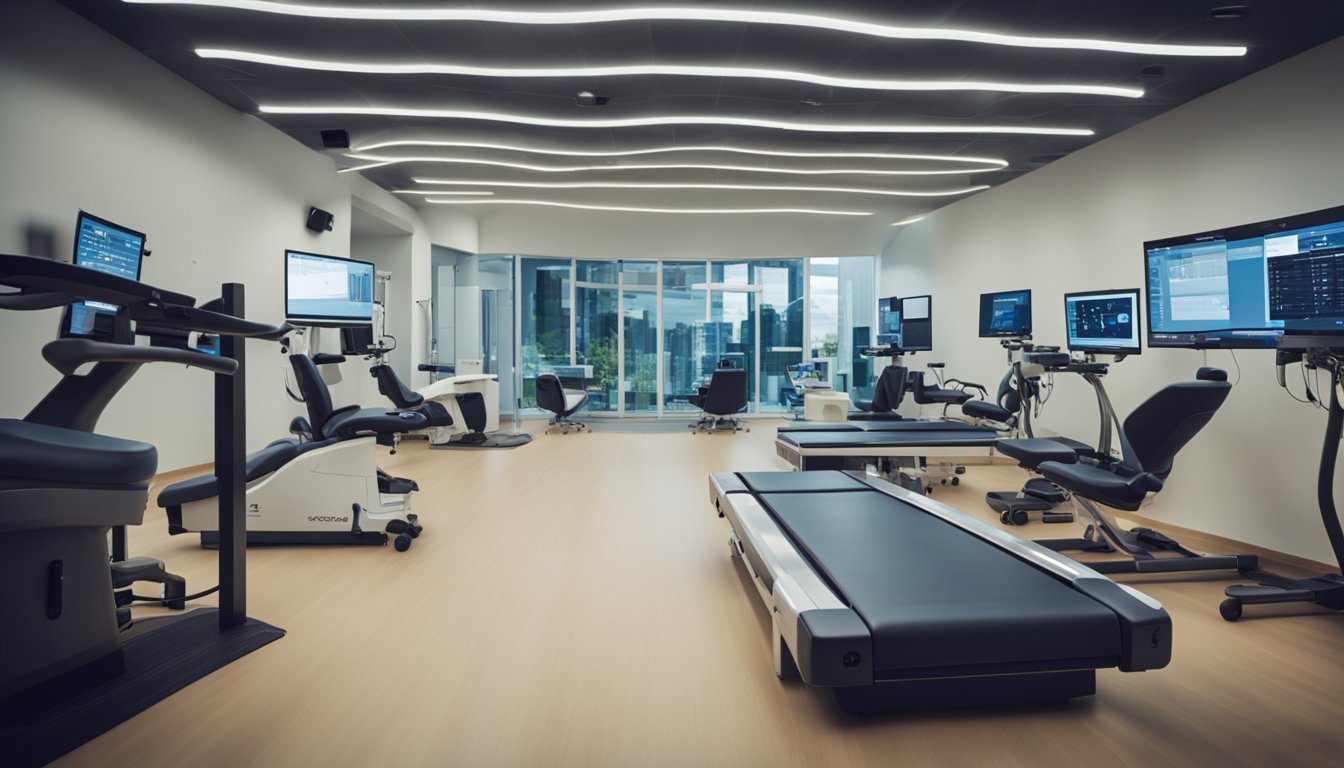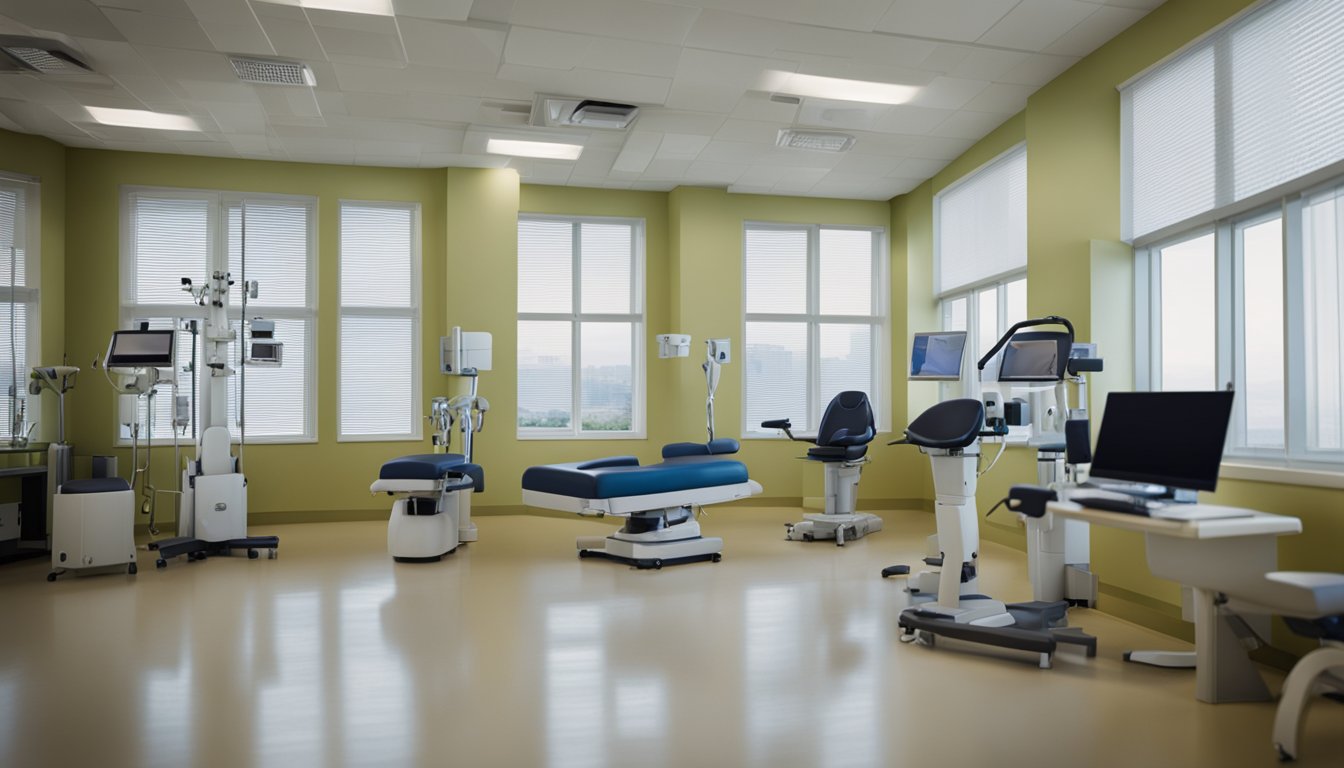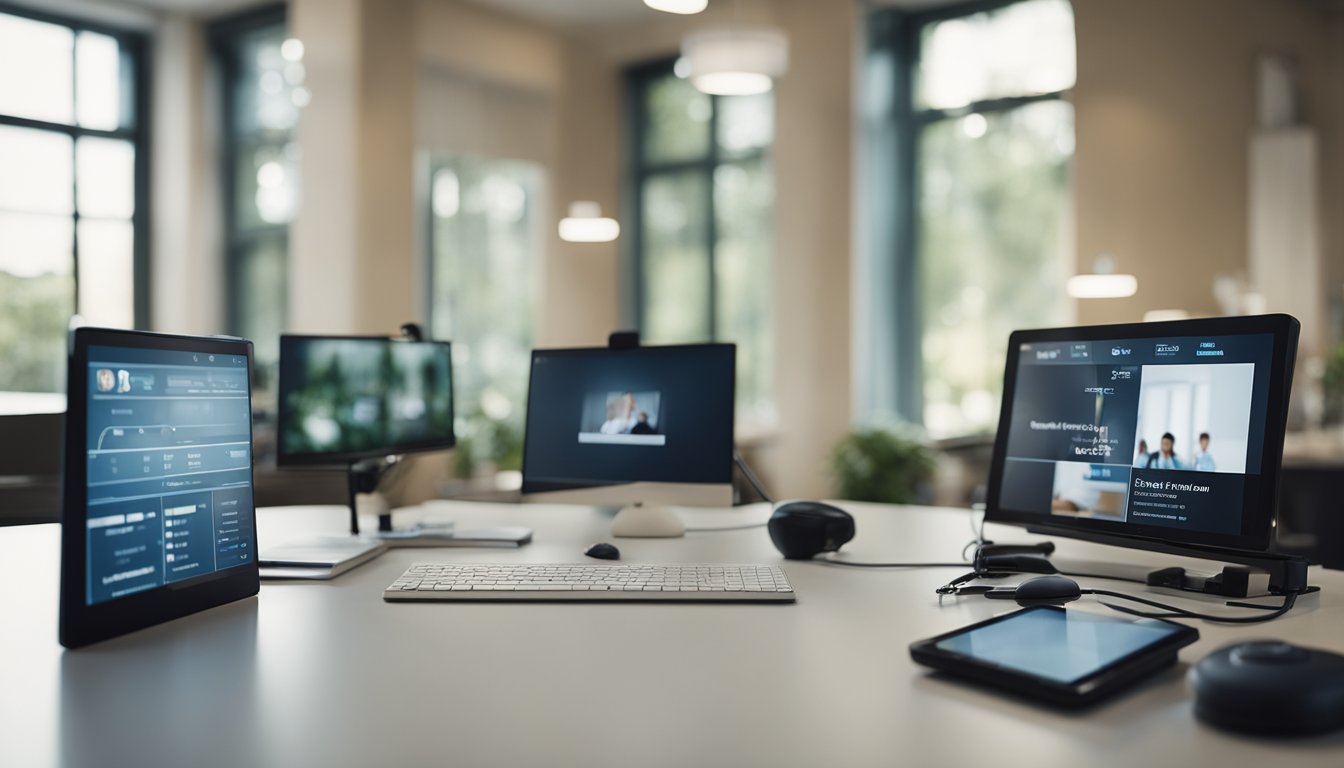Late updated: 28 Mar 2025 15:03
Written by: Ella Thompson
Exploring Digital Innovations In Rehab Centres: Transforming Patient Care Today
Digital innovations are transforming rehabilitation centres, reshaping the landscape of patient treatment and recovery. In our rapidly evolving healthcare ecosystem, these breakthroughs, from virtual reality therapy to artificial intelligence, are significantly enhancing patient outcomes. By integrating cutting-edge technologies, rehab centres are not only improving the quality of care but also aligning with the future of healthcare delivery.

Patients and healthcare providers now benefit from improved communication and engagement, fundamental aspects of effective rehabilitation. As technology opens new avenues for remote and personalised care, these advancements provide patients with greater autonomy and involvement in their recovery journey. Our exploration into this subject aims to shed light on the exciting innovations shaping the future of rehabilitation.
Key Takeaways
- Digital innovations enhance outcomes in rehab centres.
- Improved communication boosts patient engagement.
- Emerging tech aligns with future healthcare trends.
Technological Advances in Rehabilitation

In recent years, rehabilitation centres have embraced a range of digital health technologies to enhance patient care and improve health outcomes. These innovations are significantly changing how we approach physiotherapy, patient monitoring, and personalised treatment plans.
Wearable Technology and Exoskeletons in Physiotherapy
Wearable technology, such as sensors and fitness trackers, is transforming physiotherapy by offering real-time data on patient movements. Exoskeletons, on the other hand, provide physical support to patients with mobility issues, facilitating recovery and improving muscle strength.
These technologies not only enhance the patient experience but also help us in tailoring rehabilitation exercises to meet individual needs. By employing data analytics, we can track progress and adjust treatments accordingly, leading to improved recovery rates.
The Impact of Digital Tools on Patient Monitoring
The integration of digital tools in patient monitoring allows for continuous assessment of vital signs and behaviours. Sensors and mobile apps provide clinicians with real-time data, enabling prompt interventions when necessary.
This technological shift enhances our ability to maintain high standards of patient care, ensuring that any deviations in expected health outcomes are addressed swiftly. This approach is crucial for treatment adherence and significantly reduces the risk of complications during the recovery process.
Machine Learning for Personalised Treatment Plans
Machine learning offers us the capability to create personalised treatment plans by analysing patient data patterns. Artificial intelligence systems can predict likely patient responses to different rehabilitation methods, allowing us to adjust strategies for optimal results.
By embracing this technology, we can better align treatment plans with patient needs, improving their chances of a successful recovery. Furthermore, the insights gained from machine learning can enhance our understanding of various recovery patterns, helping to refine future rehabilitation techniques.
Enhanced Communication and Patient Engagement

The integration of digital innovations in rehabilitation centres enhances patient communication and engagement. These advancements facilitate access to comprehensive care through telehealth services, improved health literacy, shared decision-making, and mobile health applications. Such technologies create a patient-centric experience, fostering better health outcomes.
Integrating Telehealth Services in Rehab Therapy
Telehealth is a key component in modern rehabilitation. Virtual consultations allow us to reach patients who might have struggled to attend appointments due to distance or mobility issues. By using secure digital platforms, healthcare providers can extend care beyond the confines of a physical location, offering real-time consultations and personalised treatment plans.
Digital healthcare solutions like video calls and online messaging enable us to maintain regular communication with our patients, keeping them engaged and informed throughout their treatment. Through these tools, patients receive consistent monitoring and support, leading to a higher level of patient engagement. Telehealth also promotes health equity by providing access to those in remote or underserved areas, ensuring everyone has the opportunity to participate in their care actively.
Improving Health Literacy and Shared Decision-Making
Effective communication is essential to improving health literacy among our patients. By employing digital interventions, we empower patients to become active participants in their rehabilitation journey. Through accessible information and resources, individuals can make informed decisions about their treatment options, transforming the healthcare experience into a collaborative effort.
Shared decision-making is central to a patient-centric model of care. Providing tools and information in an understandable format helps patients comprehend their condition and evaluate their choices critically. This inclusive approach not only enhances patient engagement but also ensures that patients are making decisions aligned with their values and preferences.
Mobile Health Applications and Treatment Accessibility
Mobile health applications revolutionise how we deliver rehabilitation services. These apps grant patients the freedom to access treatment programmes, educational materials, and tracking tools anytime from their device. This flexibility supports patients in managing their rehabilitation progress independently, fostering a proactive approach to their wellness.
Mobile apps also improve communication between patients and healthcare providers. Features such as built-in messaging systems and push notifications keep patients connected and informed, facilitating timely feedback and guidance. By leveraging these tools, we can ensure that treatment adherence and patient satisfaction are at the forefront of our care approach.
Frequently Asked Questions

In recent times, rehabilitation centres have adopted a myriad of digital innovations. These technologies, from virtual reality systems to mobile applications, are transforming patient care. Let's explore how these tools are reshaping rehabilitation practices and enhancing patient outcomes.
What are the latest advancements in technology being utilised for rehabilitation therapy?
Recent advancements include the integration of robotics, AI, and wearable technology in rehab therapy. These tools provide customised treatment plans and real-time monitoring, offering a significant leap from traditional methods.
How are virtual reality systems enhancing patient experiences in rehabilitation centres?
Virtual reality systems allow patients to engage in immersive environments that promote recovery. These systems provide controlled, simulated scenarios to practise skills and improve physical and cognitive function, making rehabilitation less daunting and more engaging.
In what ways have mobile applications transformed the approach to patient care in rehab facilities?
Mobile applications have revolutionised patient care by offering on-the-go access to personalised exercise programmes, reminders, and educational resources. This ensures continuity of care and supports patients in their day-to-day recovery activities.
What impact does telemedicine have on the efficiency and accessibility of rehabilitation services?
Telemedicine bridges the gap between patients and healthcare professionals by providing remote consultations and follow-ups. It enhances access to rehabilitation services for those unable to travel, making it easier to adhere to treatment plans and receive timely care.
How does artificial intelligence contribute to personalised treatment plans in rehabilitation centres?
AI analyses patient data to craft individualised treatment strategies, predicting patient needs and optimising therapy sessions. This efficient approach ensures tailored care that adapts to the patient's unique progress and challenges.
What role does data analytics play in improving outcomes for patients in rehab facilities?
Data analytics provides insights into treatment efficacy and patient outcomes by analysing large sets of clinical data. These insights drive improvements in rehabilitation practices, guiding the development of more effective interventions and strategies.
